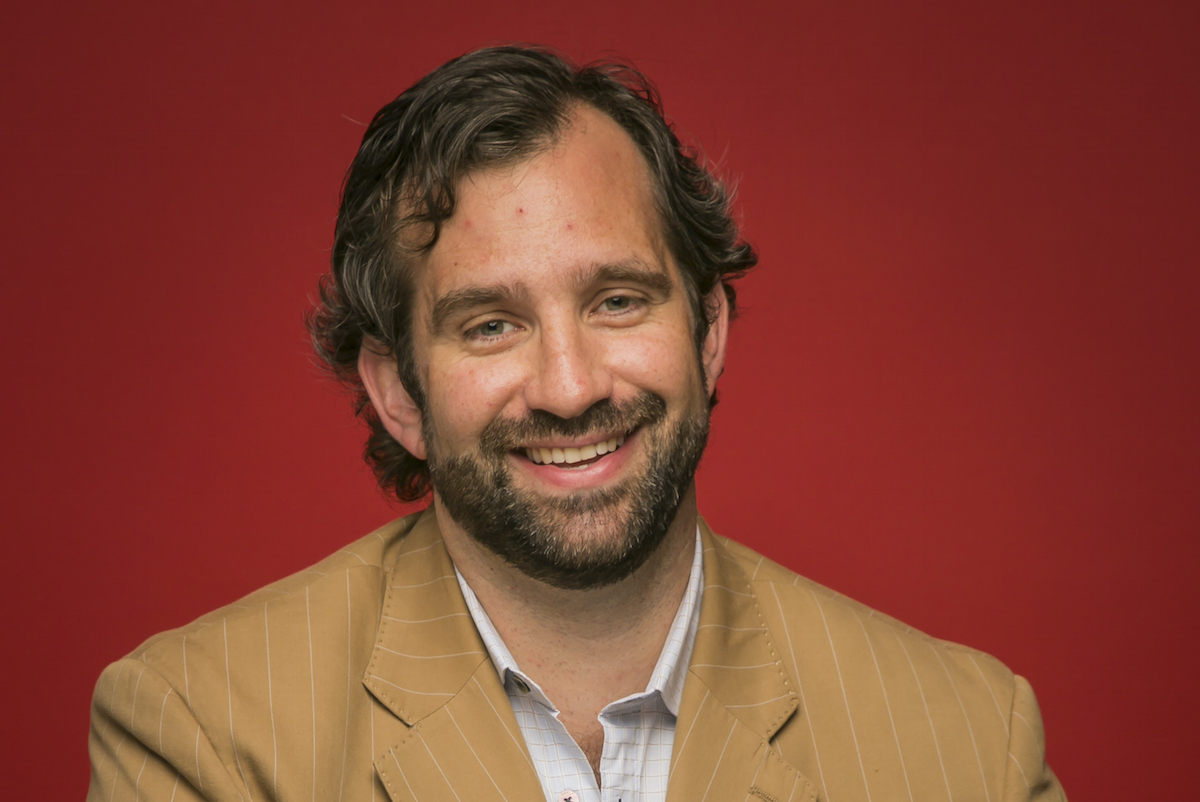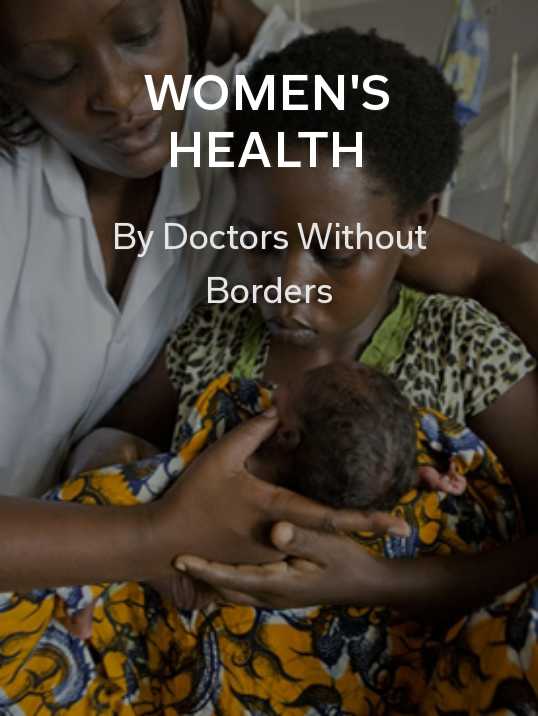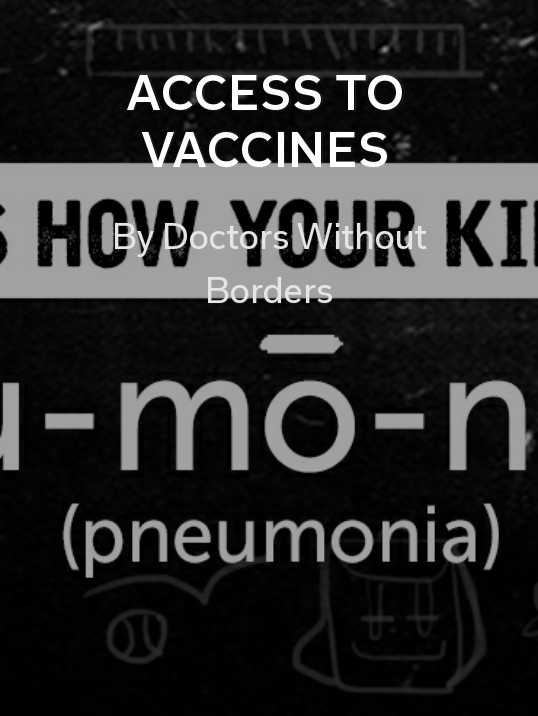On The Red Couch With Doctors Without Borders Executive Director Jason Cone
Gabriella Schwarz / September 16, 2015

Since its founding in 1990, Medecins Sans Frontieres (MSF-USA) or Doctors Without Borders, has opened offices in 28 countries, employed more than 30,000 people and treated over a hundred million patients—8.25 million in 2014 alone. Jason Cone serves as executive director of the U.S. operation that manages programs in Sudan, South Sudan, Chad and Ethiopia, among others countries. He spoke to us about the biggest humanitarian crises across the world today and how MSF is tracking those conflicts in Flipboard Magazines so readers can “really see the full story.”
You’re involved in areas deeply impacted by strife. What keeps you motivated? Is there a particular person or experience that helps push you?
It’s two-fold. One is that I’m here in New York running the U.S. operation, and my colleagues are in the field, oftentimes working seven days a week. I’ve been with them in the field; I’ve been in places like South Sudan deep in the bush living, 120 degree heat and seen how our teams work day in and day out, whether it’s in war zones in Yemen or places like the Central African Republic or taking on huge risks to put on the personal protective equipment to go treat patients inside an Ebola treatment unit. I’m motivated by my colleagues who I work with day in, day out.
And then when I am in the field, seeing the lengths at which people will go, the patients we treat in the field are some of the bravest people I’ve ever met. I remember in South Sudan in one of our clinics in Jonglei State—this really remote area—I met a woman who had carried her twins, 9 months old each, in two large woven baskets the better part of at least 15, if not 20, miles to reach our clinics so they could get their vaccinations. She had to cross rivers that we would never let our own people go through because of the snakes and the crocodiles. Seeing the lengths at which she would go to meet our teams to get the kind of assistance she needed just to give her kids a better chance at life…that’s pretty inspiring and keeps you moving. There’s no escaping that there’s many things that we deal with in MSF on a daily basis, and other humanitarian organizations for sure, that can be really depressing, that can really suck the life out of you. But at the same time, we see both the worst and the best possibilities. There are hard days, but it does drive you to keep working because it gives you a sense of purpose, a mission.
How would you characterize those who volunteer to serve the organization?
The people I work with, they’re tough, committed people. They’re the kind of person who’s willing to leave home, 6-9 months to a year, live in really remote conditions oftentimes on the frontlines or very close to war zones. They are, in terms of the doctors and nurses and other medical professionals, confident in their abilities as medical practitioners. They oftentimes have to work with really limited access to the kinds of diagnostics and other types of laboratory equipment they would normally rely on. When I was in that same project in South Sudan in 2013, we had a Singaporean nurse, a German midwife, a Dutch doctor, an American logistician. We also had a Sierra Leonean doctor, a Congolese nurse and that’s not even counting the South Sudanese staff that we had working in the project. These are individuals who live to meet and work with other people across wide cultural, religious and other gaps, and to find a way to close those gaps. That’s not easy. It’s not easy dealing with all of the different militant jihadist groups that we deal with, whether it’s in Yemen, Syria and other places, like Gaza. It’s really one of the most challenging jobs out there, to be honest. It pushes you on many levels: physically, mentally, psychologically.
The refugee crisis in Syria is top of mind right now. What’s been the biggest challenge to bring aid there?
A huge swath of the country is really inaccessible for most aid agencies with the exception of the aid they will allow to be brought, which is brought in by local Syrians. And honestly, it’s really Syrians themselves who have organized themselves by diaspora or just at the community level. So MSF and other organization have been on the periphery. There’s been times when we were able to have greater assets than we do today. But for the most part, inside Syria, it’s certainly the most dangerous place to deliver aid in the world. We face real difficulty with groups who don’t accept our presence and don’t really accept the presence of foreign aid organizations. We also have a government that’s systematically targeting the medical system inside the country–bombed hospitals and clinics. Nothing is really off the table.
In Syria today it’s about supporting those who remain–the paramedics, doctors and nurses–with medical materials. But it’s really a fraction of what’s needed. And what you see is the explosion of people fleeing Syria. This is going to be hundreds of thousands of people. You have to take into account that you’re talking about 11 to 12 million people in Syria who have either become refugees or are displaced inside the country. It’s by far the biggest crisis MSF has faced in a long time, maybe ever in terms of the depths of misery and the difficulties of reaching people at the heart of the conflict.
Is there more the U.S. could be doing to help you?
Like the other members of the Security Council, they play a critical role in maintaining peace and security in the world. Syria today is a byproduct of their failure to help provide a constructive role in resolving this conflict. Groups like MSF respond to the symptoms of political failures. Even if the U.S. government didn’t have a direct hand per se in the start of this conflict, it and others have not really played their roles in helping to resolve it either. Syria’s people are suffering from a very complex and costly battle for control in the region that spans both political, religious and ideological areas. At a minimum I think, and this is being talked about today, we need to provide a sanctuary for these people fleeing. What’s happening in Europe is not a European problem. It is an international problem in terms of providing sanctuary for people fleeing some of the bloodiest conflicts we’ve seen since WWII. There is a responsibility that the U.S. has; it’s not just European countries alone to hold his burden. And there are many other countries that could be stepping up in the region—the Gulf states, etc. There’s always more that can be done, but at the end of the day the humanitarian aid is a Band-Aid to much more complex political problems.
How has the changing media landscape helped or hurt your ability spread the word about the work of Doctors without Borders on the ground and in our country?
In some ways it’s been a long way coming. We’ve had almost over 10 years a retrenchment of foreign news coverage by most media outlets. Television, with the exception of CNN and some foreign bureaus for CBS, NBC and ABC, and then Al Jazeera English and Al Jazeera America, there’s really been a retrenchment of foreign coverage. You’re really relying on the traditional news outlets: The New York Times, Washington Post, Associated Press. It’s not long ago that newspapers like Newsday and others had quite significant bureaus—they had bureaus in the hearts of Africa and other places. What it’s meant is that no one particular outlet, like we saw in the ’80s, ’90s and early 2000s, can claim a real monopoly on an audience. It’s a highly fractured audience generationally and across demographics. It poses both opportunities and threats. It’s much more complex to reach the size of audience that we had in the past. Had we been able to get a story on “60 Minutes” or the Nightly News, we knew we were reaching a huge swath of the U.S. public. Whereas today we have to work much harder, and we’re also using multiple platforms. We’ve used Flipboard as a really key platform for us to do some interesting storytelling; same with Twitter, Facebook, Tumblr, all these other platforms.
It’s interesting to see how social media is influencing people, and we’ve seen clearly with the images of the young Syrian boy died on the shores of Turkey, how that is proliferated around the world and influenced public opinion. We’ve been watching horrific pictures of children being slaughtered in Syria going back four years now. So it’s an interesting and poignant moment in terms of communication, human compassion and outrage, and how those things can be brought together through these different platforms.
You have 13 diverse Flipboard Magazines. What do you see as the advantage of those packages and how does it help you convey your larger message?
I think it helps us put together really a nice mix of human interest stories and in-depth analysis of the issues we’re working on; something that maybe isn’t as easily compilable even on our own website. We’re able to put together almost a briefing document or at least a gateway to a briefing on something like the cost of medicines, or drug-resistant tuberculosis or Ebola. At the time we created an Ebola magazine almost at the beginning of the crisis, and I think the subscription exploded, if I remember correctly. [Flipboard] is a way for someone to subscribe and really see the full story, as opposed to bits and pieces that you get from a Twitter feed, which is very sporadic and doesn’t necessarily give you the historical trajectory of how something’s evolved and doesn’t always give you a good gateway to the most meaty material.
Keep up with the migration across the Mediterranean, the Syrian refugee crisis, women’s health issues and barriers to vaccinations, among other topics through MSF’s Flipboard Magazines.
~GabyS is reading “Europe’s Migration Crisis“
GET FLIPBOARD ON:
iOS / ANDROID / WINDOWS / WEB
FOLLOW US ON:
FLIPBOARD / TWITTER / INSTAGRAM / FACEBOOK / GOOGLE+ / TUMBLR / YOUTUBE / SOUNDCLOUD / PINTEREST / MEDIUM








